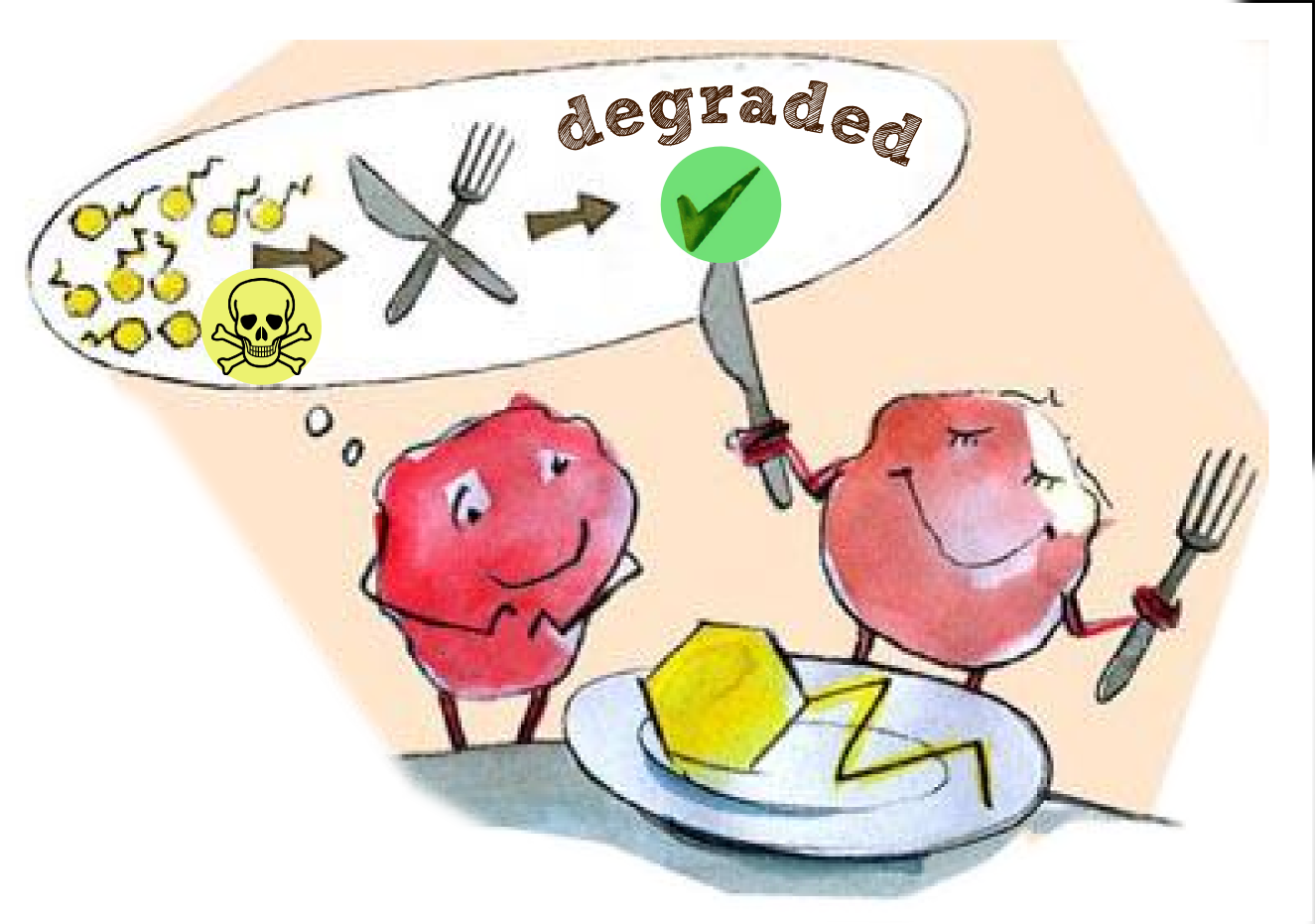Team:TU-Munich/Project/Biodegradation
From 2013.igem.org
Biodegradation of Xenobiotics
Biodegradation is defined as "a process by which microbial organisms transform or alter the structure of chemicals introduced into the environment" (U.S. Environmental Protection Agency, 2009). We work with this concept by degrading or transforming noxious substances in waste water into non-hazardous compounds. These substances, such as antibiotics, hormones or pesticides are not removable by common waste water treatment plants, but there exist enzymes from natural catabolic mechanisms in different microorganisms to inactivate them. To utilize these enzymes we integrated them into a plant as a self-sustaining sedentary organism to create a functional water filter system. To illustrate this approach we chose three potent enzymes:
- The Erythromycin esterase, which degrades macrolides, a persistant group of antibiotics
- The Laccase BPUL, which degrades several noxious substances, for example the artificial hormone ethinyl estradiol, the main ingredient of contraception pills
- The Catechol-2,3-dioxygenase, catalyzing the degradation of aromatic pollutants, which occur in pesticides and insecticides
Erythromycin Esterase (EreB)
Laccase (Bacillus pumilus)
General Information
Laccases are implicated in a wide spectrum of biological activities and, in particular, play a key role in morphogenesis, development and lignin metabolism in fungi, bacteria and plants. For example, they are necessary to degrade lignin in Basidiomycetes and synthesize complex polymers like Melanin in Ascomycentes. Laccases belong to the enzyme class of Oxidoreductases (EC 1.10.3.2). They are also known as monophenolic Oxidases, because of their substrate specifity.It is widely believed that Laccases are the simpliest representatives of the ubiquitous blue multi-copper oxidase family. Laccases are extracellular enzymes consiststing usually of 15-20 % carbon-hydrogen. Their molecular weight ranges deglycated from 60 to 80 kDa. Further on Laccases can occur as monomers, dimers, trimers and tetramers.
Active site and catalyzed reaction
The specific blue copper ions in the active site of Laccases are essential for the enzyme mediated radical oxidation of phenolic groups. In general, Laccases catalyze the linked oxidation of many aromatic and phenolic substances while the phenolic group is oxidized to a radical and oxygen is reduced to a hydrate. The active site of the enzyme includes a four-copper-ion-cluster which can be detected by using Spectroscopy. The cluster consists of one type 1 blue copper-ion, one type 2 and two type 3 copper-ions. In this reaction the electron from the oxidation is transfered to the other three copper ions. These ions form a trinuclearic cluster, which transfers electrons to the terminal electron acceptor oxygen. In the end, molecular oxygen is reduced, by receiving four electrons, to water.
Possible applications of Laccases
Due to their ability to oxidize phenolic and nonphenolic lignin related compounds, as well as highly recalcitrant environmental pollutants, Laccases possess a high potential as a bioremediation agent in synthetic biology. Waste water from hospitals, textile and paper industry, as well as in sewage treatment plants can be detoxified. Possible substrates may be natural and synthetic Estrogens, Xenoestrogens and polycylic aromatic hydrocarbons. Laccases may also be used to degrade high polymeric Lignin to make use of the polymer for energy generation. Carcinogenic, mutagenic aromatic hydrocarbons and estrogens, xenoestrogens and polycyclic aromatic hydrocarbons can be oxidized and detoxified by laccases, too. In addition to that, Laccases can oxidize up herbicides, pesticides in soil.
Catechol Dioxygenase (XylE)
As ever more third world countries around the globe experience a rapid industrialization without establishing proper environmental practices as well as big companies outsourcing their production facilities in order to avoid expensive sewage treatment the problem of water pollution is more urgent then ever. In order to tackle this problem we were looking for a suitable pollutant which our moss could degrade resulting in a better overall water quality. The organic compund catechol, or 1,2-dihydroxybenzene, met all our criteria as it was a byproduct or raw material in several processes in the chemical industry as well as a stable product of several natural pathways in microbia degrading catechol-like pollutants. Further research into this topic showed that catechol was already a popular target for degredation not only in the iGEM competition but also regarding phytoremediation were it was degraded by Arabidopsis thaliana. Nevertheless we felt that no applicable or effective method to remove catechol from the environment was presented yet, as microbial degredation is unsuitable to establish in poor countries as to its lower cost-effectiveness compared to our moss system. Additionally a removal of the highly soluble catechol through a waterborne moss like Physcomitrella patens seems more fitting then through other plants.
Catechol
Pollution
References:
http://www.ncbi.nlm.nih.gov/pubmed/6327079 Edens et al., 1984
- http://www.ncbi.nlm.nih.gov/pubmed/6327079 Edens et al., 1984 Edens, L., Bom, I., Ledeboer, A. M., Maat, J., Toonen, M. Y., Visser, C., and Verrips, C. T. (1984). Synthesis and processing of the plant protein thaumatin in yeast. Cell, 37(2):629–33.
 "
"




AutoAnnotator:
Follow us:
Address:
iGEM Team TU-Munich
Emil-Erlenmeyer-Forum 5
85354 Freising, Germany
Email: igem@wzw.tum.de
Phone: +49 8161 71-4351